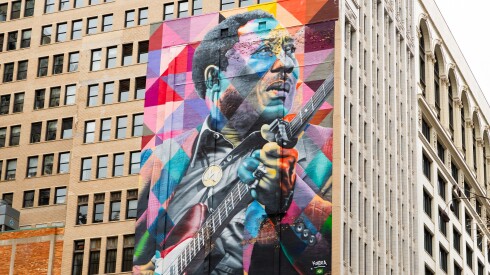Cool and Quirky Colorado Museums
From the grand and famous art and science museums of Denver to the quirkiest little niche museums in the mountains and plains, Colorado has plenty of culture and history on display. Be sure to work a visit to these spots into your trip across the state.
1250 Bannock St, Denver, CO 80204, USA
Clyfford Still brought new energy to the art world after World War II with his large-scale, color-splashed paintings, and is considered one of the most important American artists of the 20th century. Though his influence on the Abstract Expressionism movement was at least as important as that of contemporaries Jackson Pollock and Mark Rothko, Still eventually broke all ties with the art world after moving to a farm in Maryland, and following his death in 1980 a huge collection of his work was sealed off completely for more than 30 years. His is widow donated his pieces to the city of Denver in 2004, and in 2011 the Clyfford Still Museum opened, housing 94 percent of his life’s work, including some 825 paintings on canvas and 1,575 works on paper, as well as sketchbooks, journals, and his library—in a museum considered one of the best examples of contemporary architecture in the city.
3924 W 72nd Ave, Westminster, CO 80030, USA
Step back into the 1800s when you tour the Bowles House Museum. Thanks to the Westminster Historical Society, this home, located near a smattering of industrial buildings, was preserved and placed on the National Register of Historic Places. It was once owned by Edward Bruce Bowles, who drove cattle westward in 1863 and eventually became a homesteader. He was known for breeding fine horses. Besides touring the home, the grounds are well kept and beautiful. But it’s only open for tours on Saturday from 10 a.m. to 3 p.m. and by appointment from Dec. 31 through April 20.
1727 Tremont Pl, Denver, CO 80202, USA
It’s one of those buildings that you walk by all the time, yet have no idea what goes on inside. What does go on inside? Well, plenty. The Navarre Building was a bordello, fancy dining club, and jazz hot spot, and is now an art museum housing one of the best Western Art collections in the country. The Anschutz Collection is now open to the public three days a week. Go absorb some culture, and be sure to ask about the secret tunnels that used to shuttle “ladies of the night” to and from the Brown Palace hotel across the street.
17155 W 44th Ave, Golden, CO 80403, USA
If you’re into trains (or your kids are) this museum is a ferroequinologist’s (a person who studies trains) paradise. This museum houses over 100 steam and diesel locomotives, passenger cars, and cabooses as well as a G-scale model railroad in its 15-acre rail yard. There is also a restoration facility and working round table that will wow curious minds and train fans.
3091 California St, Denver, CO 80205, USA
The Black American West Museum was built in 1971, in the home of Dr. Justina Ford, Colorado‘s first black female doctor, to collect, preserve, and disseminate the contributions of African Americans to the development of the Old West. You’ll learn the stories of “all those early Blacks who came west and performed as miners, soldiers, homesteaders, ranchers, blacksmiths, schoolteachers, lawmen, and every other profession needed to build up the West.”














